By now, most of you have either downloaded or are at least aware of Google Earth. The program, which utilizes satellite imagery and aerial photographs to map the earth in amazing detail, can be used for a variety of reasons. Some people use it to locate areas they have lived or traveled, while others use it to visit remote places of the planet that one would not otherwise be able to see. I belong to this group, as I am sure many others are as well. Google Earth is the perfect tool to explore and discover the physical remains of ancient cultures or unexplained anomalies found throughout this wonderful world. Believe it or not, amazing discoveries have been found using this program.
Amazing and Mysterious Places on Google Earth
In this article, I list ten mysterious places on Google Earth (in no particular order) that are quite fascinating. In addition to the photographs imaged through Google Earth, there is a brief summary of the area and its actual coordinates so you can visit these strange and fascinating places yourself through Google Earth.
10. Badlands Guardian
Lynn Hickox discovered the Badlands Guardian utilizing the Google Earth program. Although this area is a completely natural geological feature in southwest Alberta, Canada, one cannot help but notice the striking resemblance of a human head wearing his full native American headdress. Some have also claimed that the figure appears to be wearing earphones, which is nothing more than a road leading to an oil well. Even though this area is a natural formation, it is amazingly ironic to see these arid badlands formations resemble the fully detailed shape of the very same indigenous people that lived in these lands.
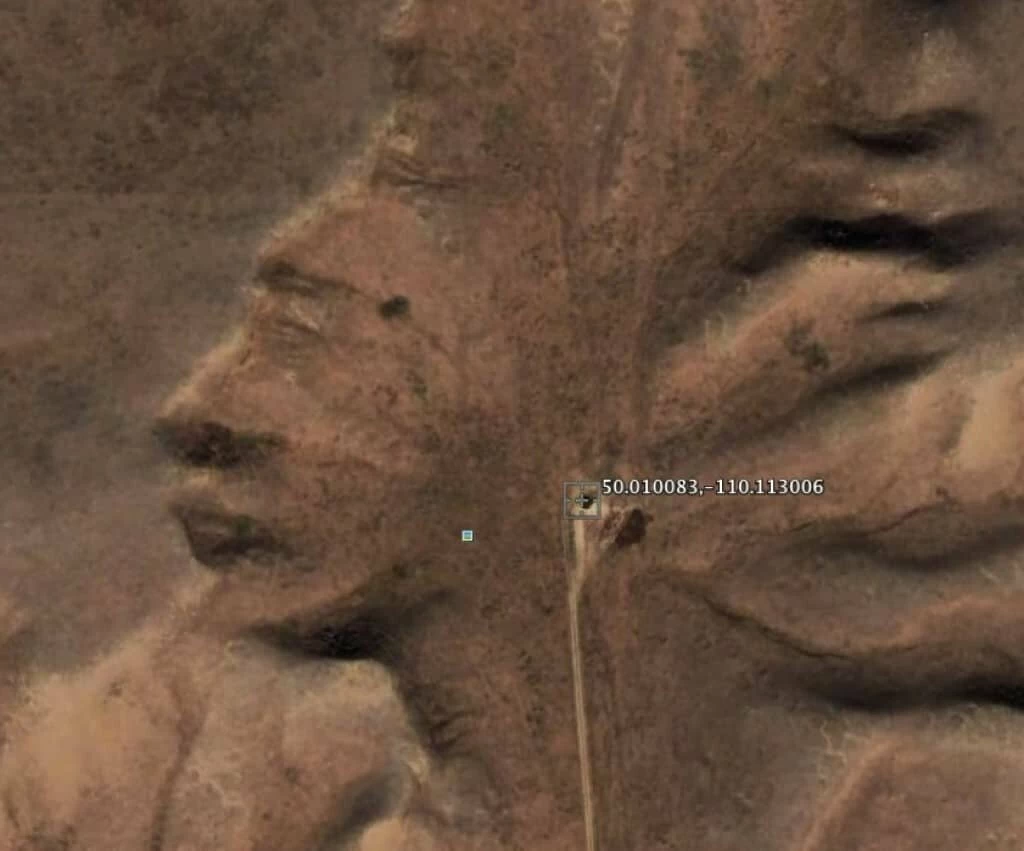
Geocoordinates: 50° 0’36.30″N, 110° 6’46.82″W
9. Egyptian Ruins Coordinates
It doesn’t take long to discover an interesting find when using Google Earth to explore the shifting sands of Egypt. As you can see from this attached image, the angles and straight lines of what appears to be a fortification wall protecting smaller similar structures in the interior. If you use Google Earth to explore the surrounding area, you can see additional suspected man-made ruins buried in the desert sand. I am not sure if the ruins captioned in this photograph have been thoroughly explored, but experts do state only a fraction of ancient Egypt has been discovered. Every year new tombs, structures, and even pyramids are rediscovered in this ancient land.
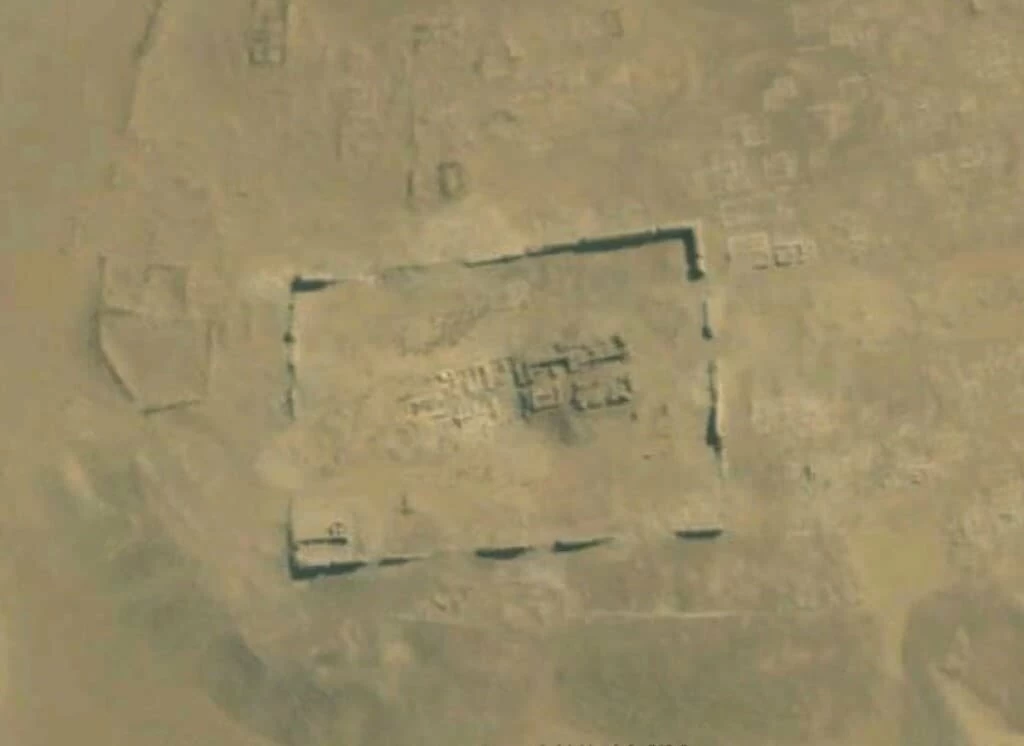
Geocoordinates: 29°32’7.65″N, 30°40’7.88″E
8. Machu Picchu Coordinates
Located on a mountain ridge above the Urubamba Valley in Peru, Machu Picchu is one of the most mystical sites on our planet. Machu Picchu is a pre-Columbian Inca site built around 1400 AD. The area only thrived for 100 years and the place was abandoned following the Spanish conquest of the Inca empire in Peru. Theories of its purpose range from it being the birthplace of the Incan“Virgins of the Suns”, an estate of the Incan emperor Pachacuti, a prison for the select few who commit extremely heinous crimes, or as a settlement to control the economy of the conquered lands. For more information on Machu Picchu, please see our article here.
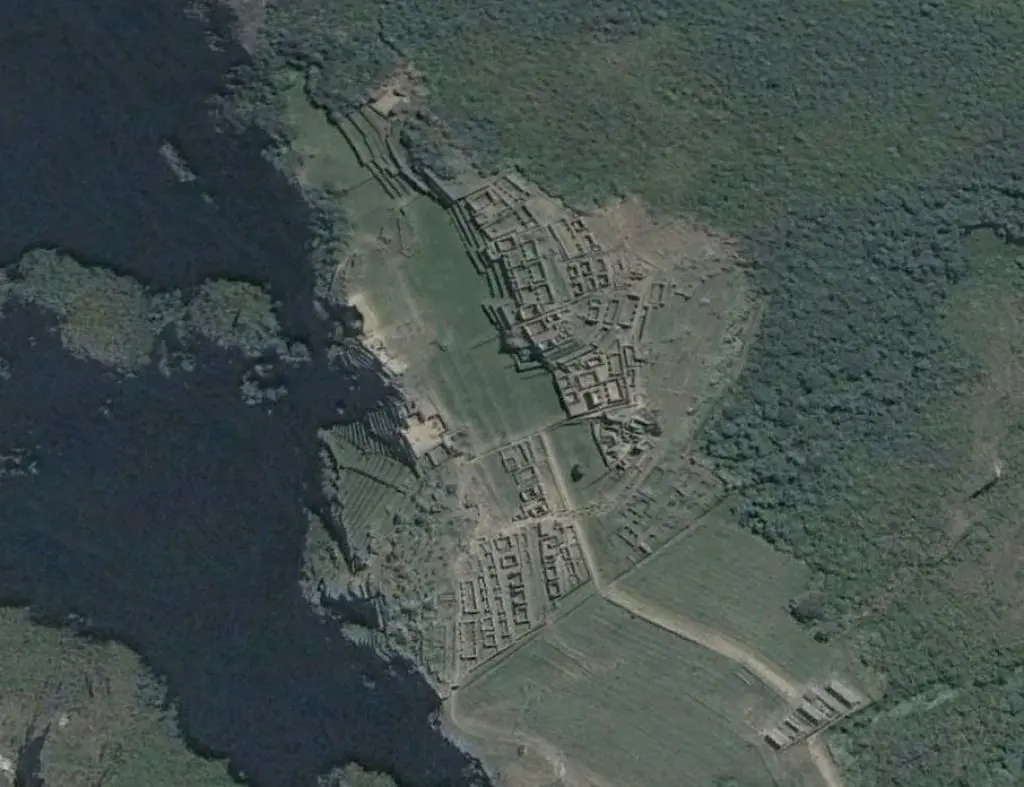
Geocoordinates: 13° 9’49.69″S, 72°32’42.65″W
7. Nazca Hummingbird
The Nazca Hummingbird is only one of many designs and strange “airstrips” sketched across the Nazca desert of Peru. These unusual man-made features were first discovered in the 1930s by passengers on aircraft flying over this vast desert on the way to other destinations. The Nazca lines were created by brushing the reddish pebbles from the desert floor, which revealed the lighter colored sand underneath. Due to the lack of rainfall and wind erosion, these lines and drawings have been preserved for centuries. Their purpose remains uncertain, although one theory states the lines and drawings were created to help bring rain. For more information on the Nazca Lines, please see our article here.
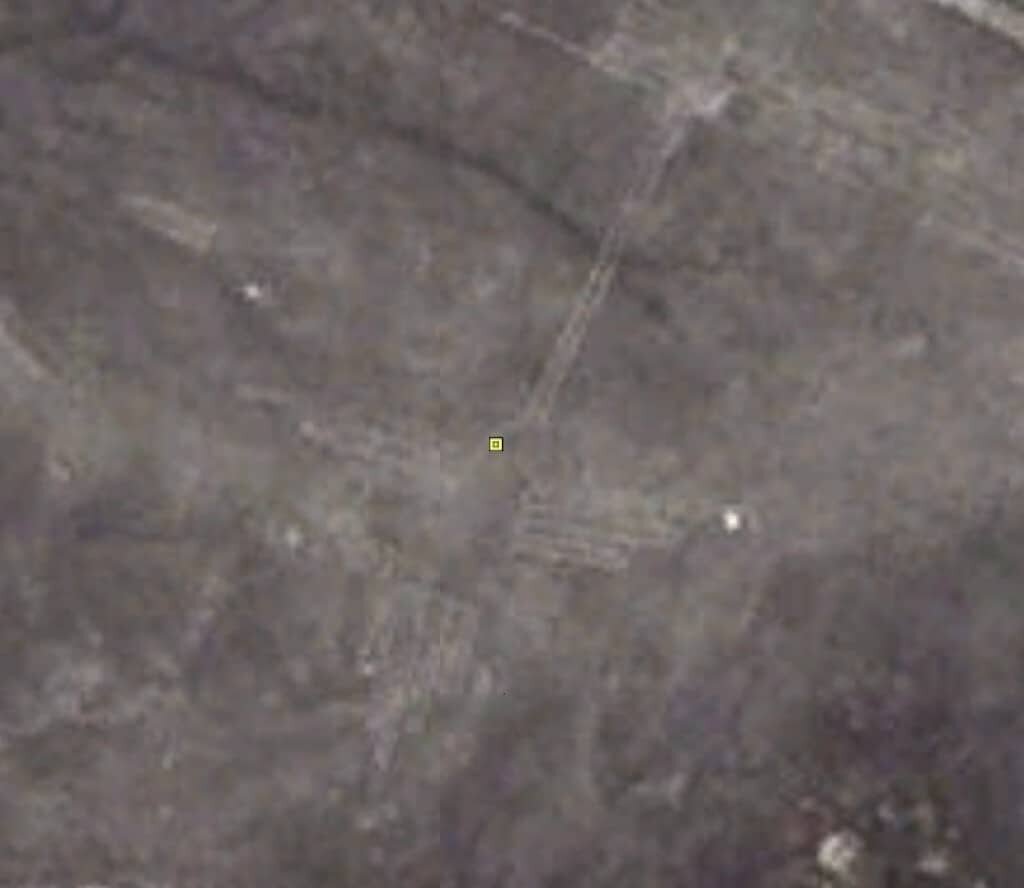
Geocoordinates: 14°41’32.27″S, 75° 8’56.91″W
6. Chichén Itzá Coordinates
The Mayan civilization from the Yucatan peninsula of Mexico is responsible for building this structure. The translation of its name literally means “at the mouth of the well of the Itza”. Although built around 600 AD, records indicate it fell around 1000 AD. Although Chichén Itzá was no longer a flourishing city by the time the Spanish Conquistadors arrived, the Mayans managed to initially push back the Spanish invaders until it was eventually conquered. The Spanish used the site as a cattle ranch in 1588 following the Mayan defeat. Chichén Itzá had once been major economic power in the Mayan lowlands and archaeological work has recovered many fine examples of Mayan relics.
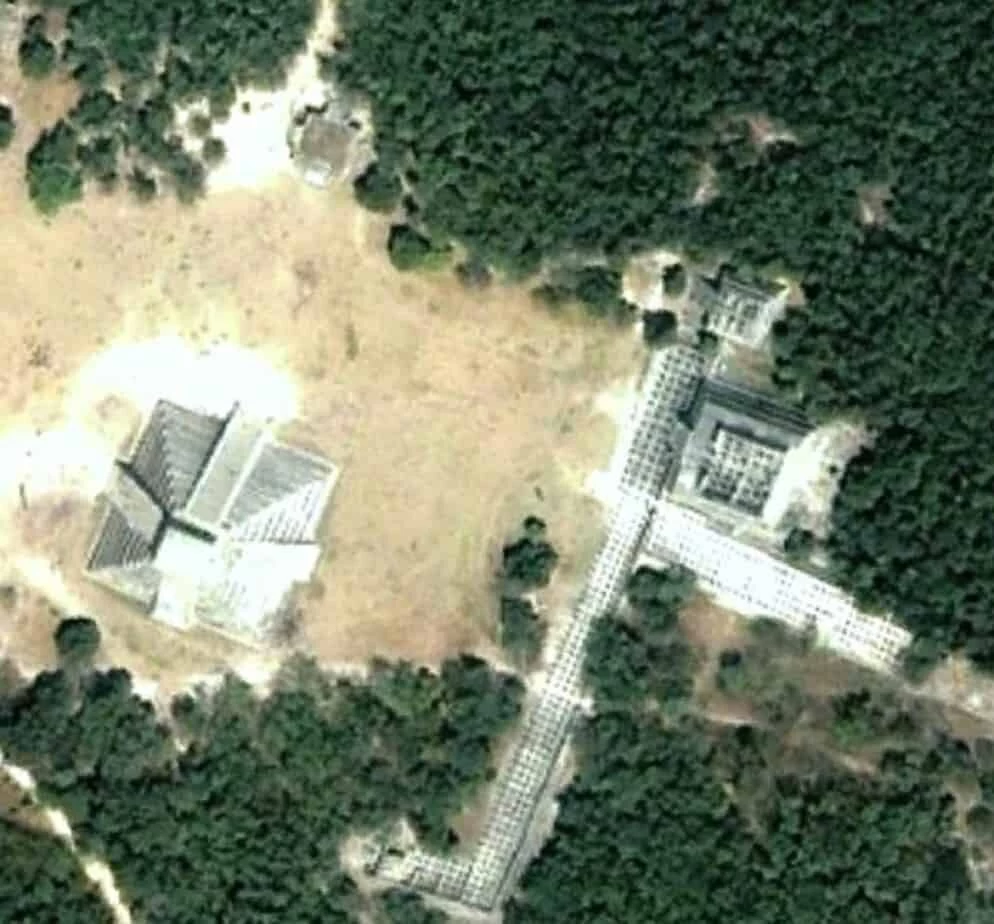
Geocoordinates: 20°40’58.64″N, 88°34’5.50″W
5. Cerne Abbas Giant
The Cerne Abbas Giant, also called the “Rude Man” or the “Rude Giant,” is a figure roughly 180 ft long and 167 ft wide. It is carved in the hillside of Cerne Abbas, just north of Dorchester, England. Its origin and date are unknown, although there are no records of this carved giant prior to the late 17th century. Its purpose is also unknown, although most scholars tend to agree it is either a symbol of fertility or the representation of the Roman Heracles. Cerne Abbas folklore claims the figure is the actual outline of a real giant that came from Denmark. Local villagers soundly defeated the giant as he slept on the hill. Although we may never know the real purpose of this carving on the hill, it is an important part of the local culture and re-chalked every 25 years to preserve its features.
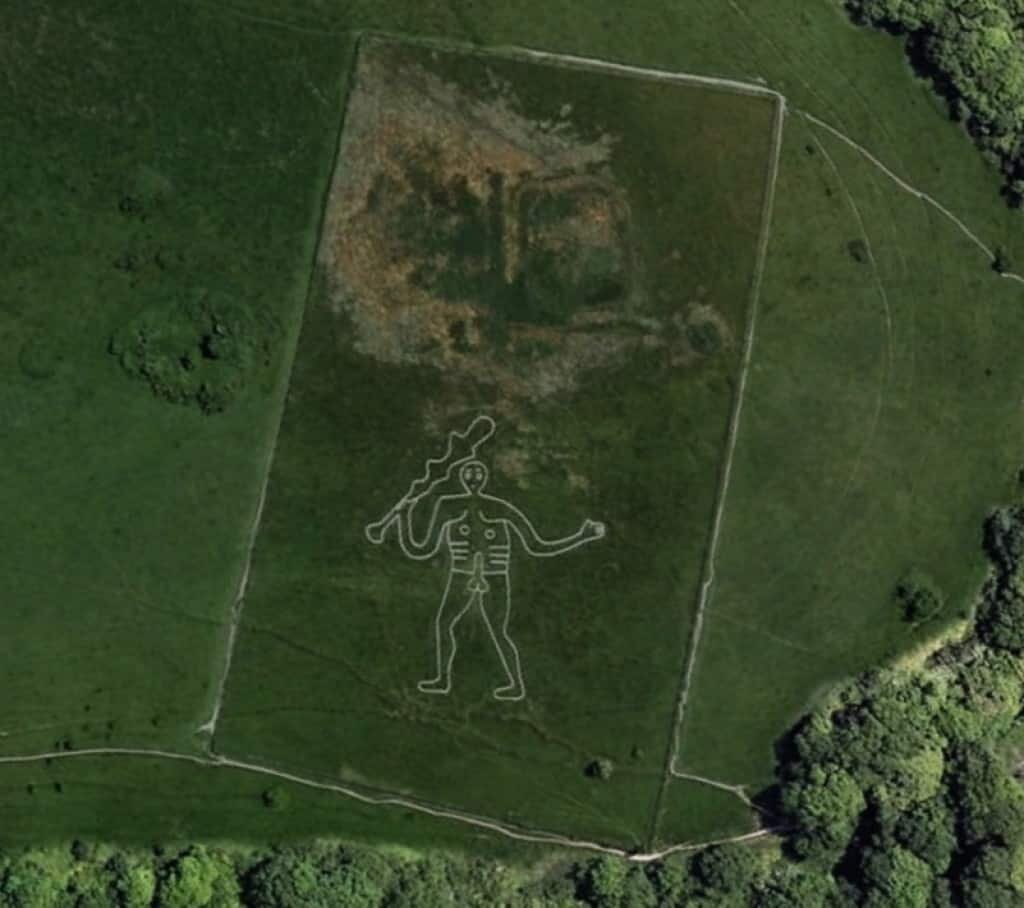
Geocoordinates: 50°48’49.00″N, 2°28’28.99″W
Related: Marree Man Geoglyph and its Anonymous Creator
4. Carved Lines in China
There isn’t much information available on these strange, yet beautiful mosaic lines carved in the desert of the Gansu Sheng province in China. Some records indicate they were created in 2004, but nothing that seems official. Of note is that these lines are somewhat near the Mogao Caves, which is a World Heritage Site. The lines span a very huge distance. However, they still retain their linear proportions despite the curvature of the rough terrain. Perhaps this is a military site to test kill probabilities of Chinese missile systems. If utilizing Google Earth to view this feature, you will notice many questions from fellow Googlers wondering what this feature is and its intended purpose.
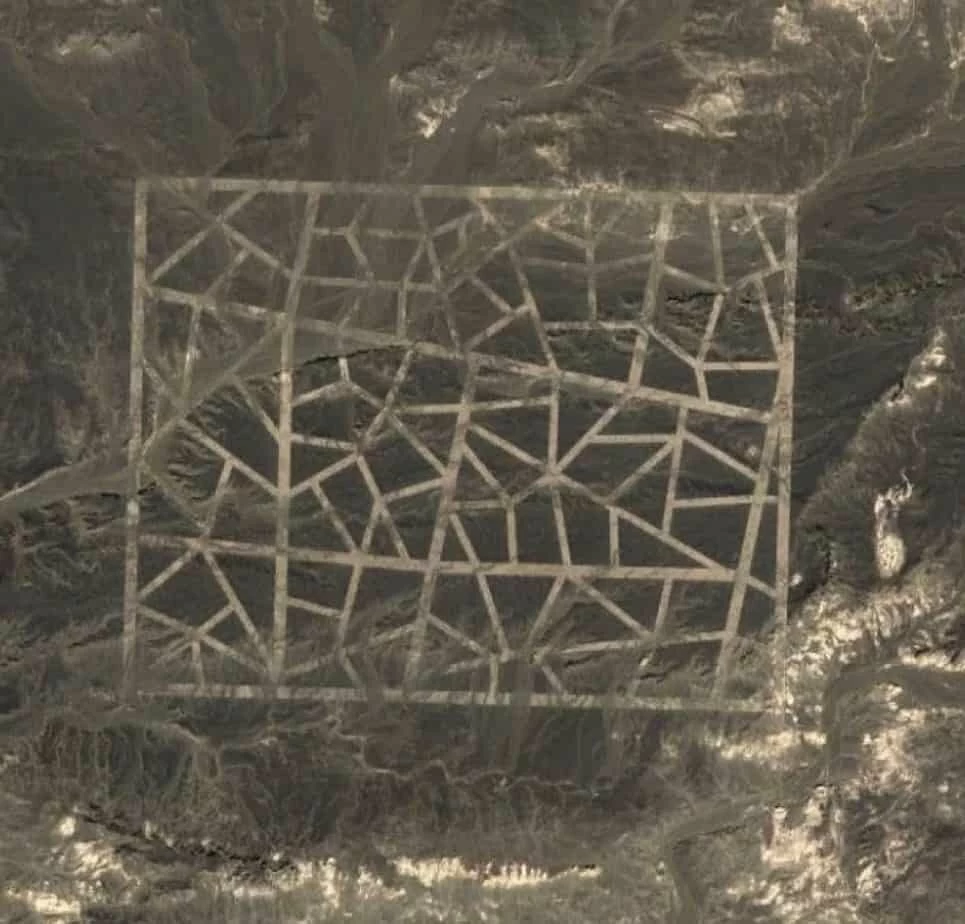
Geocoordinates: 40°27’28.56″N, 93°23’34.42″E
3. Geoglyphs at Tiliviche
Chile’s Atacama Desert holds many examples of ancient Incan geoglyphs. The Geoglyphs at Tiliviche is a fine example of a thing person and fat person herding llamas. The llamas are facing the ocean and perhaps carved into the earth as a landmark for llama caravans coming down the mountain. The llamas were as important to transportation for the ancient Incas as the camel was in the Egyptian desert. These geoglyphs may be over 2,000 years old and usually found near trading routes.
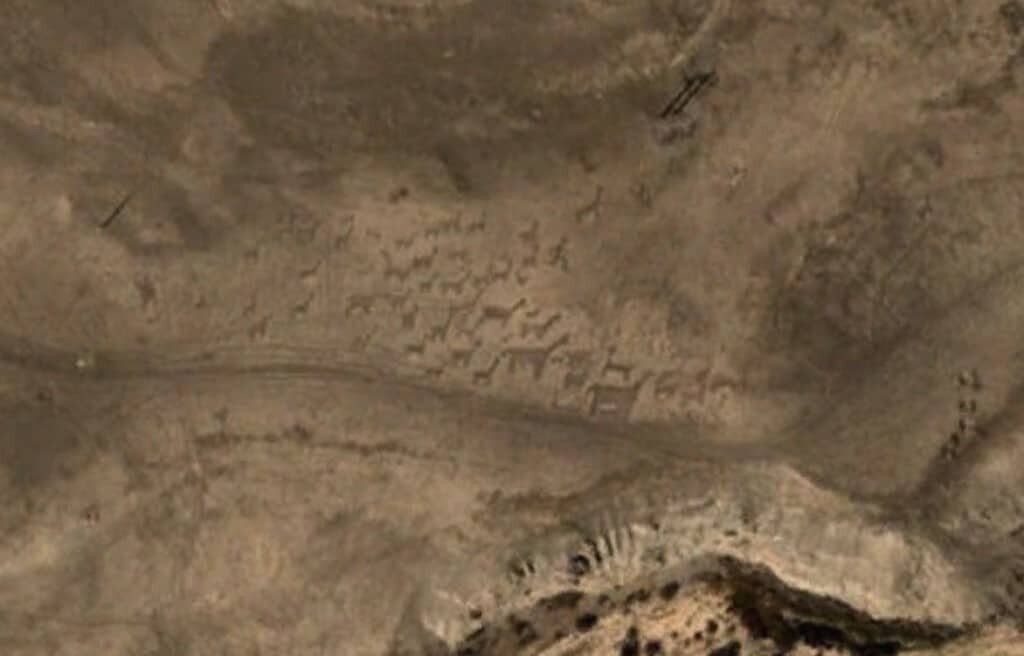
Geocoordinates: 19°32’56.62″S, 69°58’4.21″W
2. Geoglyphs of Chiza
Another example of ancient Incan geoglyphs in the Atacama desert of Chile is the geoglyphs of Chiza. These geoglyphs are not too far away from the ones located at Tiliviche. They created these designs by arranging large dark stones on the lighter sand. These particular glyphs represent images of people, birds, and other animals. What is remarkable about these Incan glyphs is that they are usually located on hillsides and visible to people in the air and on land. This particular feature has a nearby road, and as you can see by the photo. Someone has taken the opportunity to stop their vehicle and admire these amazing designs in such a dry desert.
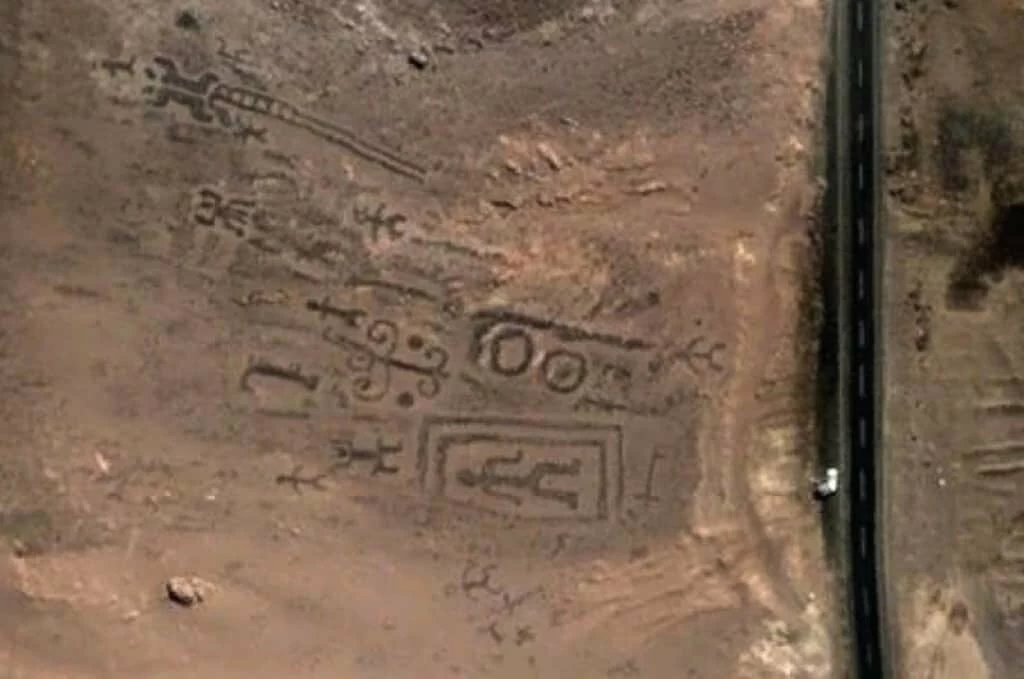
Geocoordinates: 19°12’12.51″S, 70° 0’29.37″W
1. Atacama Giant Coordinates
Our last example of mysterious places found on Google Earth is also located in the Atacama desert of Chile. The Atacama Giant is the largest prehistoric anthropomorphic figure in the world and measures 282 ft long. Records indicate it was built around 1000 to 1400 CE. Some skeptics and “ancient aliens” theorists believe this is a representation of alien visitors who visited the Incas. However, the Atacama Giant’s unusual features actually have a specific purpose. The giant represents the deity of the local people. Additionally, the various points around his head is a calendar marking days, seasons, and when to plant certain crops. They accomplished this by marking where the moon sets in reference to these points.
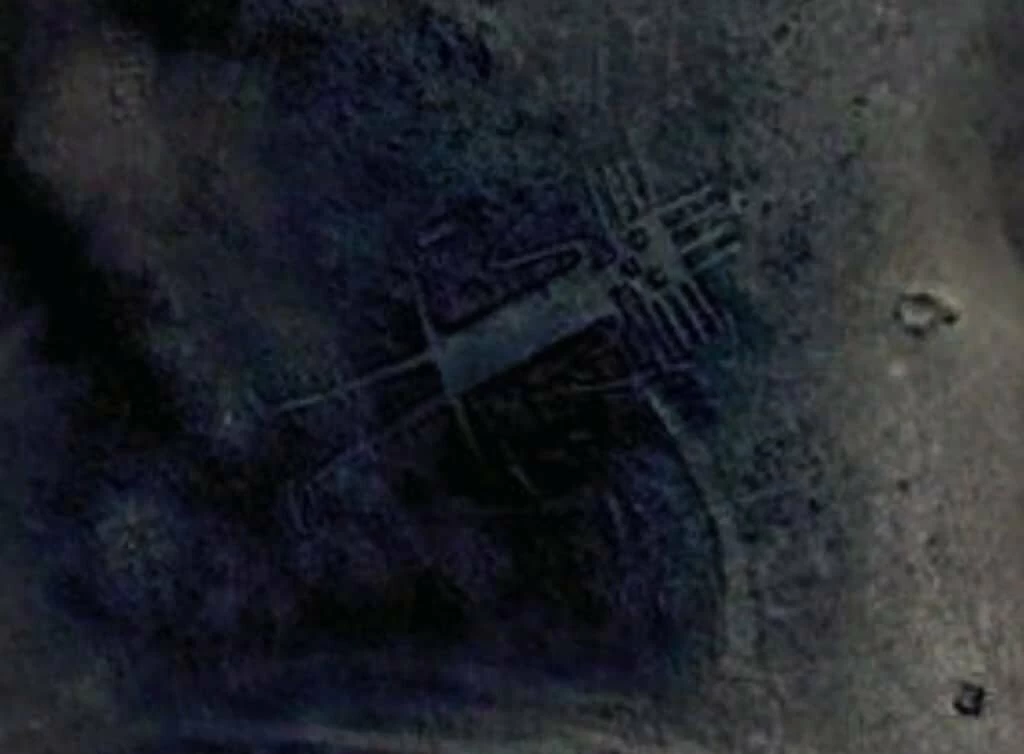
Geocoordinates: 19°56’56.88″S, 69°38’1.87″W
Related: Google Earth Coordinates of Historic Events
Of course, there are many other mysterious places that can be visited in the comfort of your own home using Google Earth. Stonehenge, the Pyramids of Giza, and Nan Madol come to mind immediately. As satellite imagery improves and our ability to peer into every corner of our ancient planet becomes more routine, many other strange and fascinating discoveries will surely emerge.